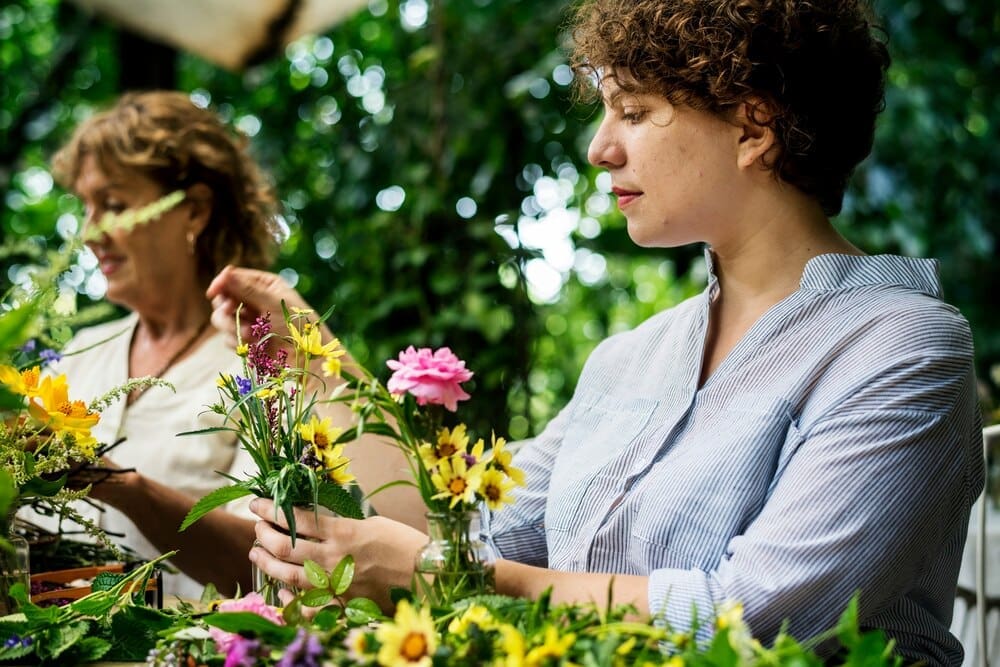For individuals seeking to improve their mental well-being, from those navigating the daily pressures of modern life to those with diagnosed conditions like depression and anxiety, a powerful therapeutic tool may be waiting just outside their door. A growing body of scientific evidence reveals that gardening, a practice sometimes formalized as horticultural therapy, can profoundly impact mental health. By engaging people physically and mentally in the natural world—whether on a small apartment windowsill or in a sprawling community plot—the act of cultivating plants reduces stress, alleviates symptoms of depression, and fosters a unique sense of purpose and connection.
The Science Behind the Soil: Why Gardening Works
The calming effect of a garden might feel intuitive, but researchers have identified specific neurological and psychological mechanisms that explain its therapeutic power. It’s a multi-faceted intervention that engages our minds and bodies in ways that directly counteract the patterns of stress, anxiety, and low mood.
The Brain on Nature: Biophilia and Stress Reduction
Humans have an innate, genetically determined affiliation with the natural world, a concept popularized by biologist E.O. Wilson as the “biophilia hypothesis.” Our brains are wired to respond positively to natural environments. Studies show that spending time in green spaces significantly lowers levels of cortisol, the body’s primary stress hormone.
Neuroimaging has further illuminated this effect. Research published in Proceedings of the National Academy of Sciences found that participants who walked for 90 minutes in a natural setting showed decreased activity in the subgenual prefrontal cortex, a brain region associated with rumination—the pattern of repetitive, negative self-focused thoughts common in depression. Gardening provides a direct and sustained dose of this natural exposure.
A Microbiome Boost: The “Good Dirt” Effect
The benefits of gardening go deeper than just sight and sound; they are literally under our fingernails. Soil is teeming with microorganisms, and some have been found to have a surprisingly direct impact on our mood. One bacterium in particular, Mycobacterium vaccae, has garnered significant attention from scientists.
Studies suggest that exposure to this common, harmless soil microbe can trigger the release of serotonin in the brain in much the same way that antidepressant medications do. This “good dirt” effect creates a biological pathway where physical contact with the earth can lead to improved mood and reduced anxiety, highlighting a powerful link between the planet’s microbiome and our own mental health.
Effort-Driven Rewards: The Dopamine of Growth
Gardening perfectly taps into the brain’s effort-driven reward system. The process of planting a seed, watering it, protecting it from pests, and watching it grow into a flourishing plant provides a tangible, visible result of one’s labor. This cycle activates neural pathways that release dopamine, a neurotransmitter associated with motivation, pleasure, and reward.
Unlike the instant but fleeting gratification from a social media notification, the rewards of gardening are earned over time. This delayed gratification helps build resilience and reinforces a healthy cycle of goal-setting, effort, and achievement, which can be particularly therapeutic for individuals struggling with feelings of helplessness or low self-worth.
Gardening as Therapy: From Passive Enjoyment to Active Practice
While anyone can reap the mental health benefits of tending a plant, the practice can also be structured into a formal therapeutic modality known as horticultural therapy. This approach uses gardening as a vehicle for healing and rehabilitation under the guidance of a trained professional.
Defining Horticultural Therapy
Horticultural therapy is a professionally directed treatment that uses plant cultivation and gardening activities to achieve specific therapeutic goals for clients. A horticultural therapist works with individuals or groups to develop a program tailored to their physical, cognitive, social, and emotional needs.
Organizations like the American Horticultural Therapy Association (AHTA) set professional standards and oversee the credentialing of therapists. These practitioners work in a variety of settings, including hospitals, rehabilitation centers, veterans’ clinics, schools, and correctional facilities, using the garden as a safe and restorative space for healing.
A Garden for Everyone: Who Benefits Most?
The applications of horticultural therapy are incredibly broad, offering benefits to a diverse range of populations. For veterans coping with Post-Traumatic Stress Disorder (PTSD), the quiet, predictable nature of gardening can provide a sense of calm and control that is often missing from their lives.
In elderly populations, it offers gentle physical exercise, stimulates cognitive function, and can combat loneliness when done in a group setting. For individuals with depression and anxiety, the focus required for gardening serves as a form of mindfulness, pulling them away from internal ruminations and into the present moment. It is also used effectively with children, helping them learn about life cycles, engage their senses, and develop a sense of responsibility.
The Core Therapeutic Elements
The power of therapeutic gardening lies in its combination of several key elements. The act of caring for something outside of oneself—nurturing a living plant—can foster empathy and build self-esteem. It requires patience and acceptance, as gardeners learn to work with factors beyond their control, like weather and pests.
The physical demands, from digging to weeding, release endorphins and reduce stress. Furthermore, community gardens provide a vital source of social connection, combating the isolation that often accompanies mental health struggles and building a shared sense of purpose and belonging.
Getting Started: Your Path to a Greener Mind
The beauty of gardening as a wellness practice is its accessibility. You don’t need a large yard or extensive knowledge to begin experiencing its benefits. The key is to start in a way that feels manageable and enjoyable for you.
No Garden? No Problem: Starting Small
If you live in an apartment or have limited outdoor space, you can still create a personal green oasis. Start with a few pots on a sunny windowsill. Herbs like mint, basil, and rosemary are easy to grow indoors and provide the added benefit of fresh flavors for your cooking.
A small balcony can house a container garden with flowers, lettuce, or even a tomato plant. For those who feel they lack a “green thumb,” low-maintenance plants like succulents, snake plants, or pothos are incredibly resilient and can build your confidence.
Finding Your Plot: The Power of Community Gardens
If you crave more space or the companionship of others, look for a community garden in your area. These shared plots offer a chance to learn from more experienced gardeners, share in the harvest, and build meaningful social connections. Joining a community garden transforms a solitary hobby into a collective, supportive activity.
This social aspect is a powerful antidote to loneliness, which research has shown is as detrimental to long-term health as smoking or obesity. Working alongside neighbors toward a common goal fosters a sense of belonging that is crucial for mental resilience.
Tips for Mindful Gardening
To maximize the therapeutic benefits, approach gardening with intention and mindfulness. When you head out to work on your plants, leave your phone and other distractions behind. Engage your senses fully: notice the rich smell of the earth, the texture of a leaf, the sound of a watering can, and the vibrant colors of the flowers.
Practice non-judgment. If a plant fails or pests attack, view it as a learning experience rather than a personal failure. Take moments to simply sit in your garden space, breathe deeply, and observe the life around you without feeling the need to do anything. This practice of being present is at the heart of its healing power.
A Prescription for Nature
In an increasingly fast-paced and digital world, gardening offers a vital counterbalance—a way to slow down, reconnect with the physical world, and engage in a meaningful, life-affirming activity. It is far more than a simple hobby; it is an accessible, evidence-based practice for cultivating mental wellness. By putting our hands in the dirt, we are not just tending to plants; we are tending to ourselves, nurturing a sense of peace, purpose, and profound connection to the natural cycles of life.














